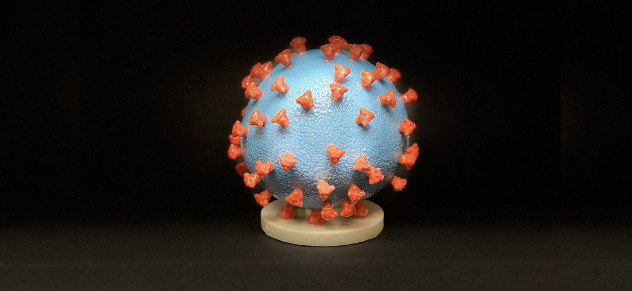The most frightening five days I have ever spent as a parent came in the fall of 2001, when our older daughter was 15.
She went to bed very early one evening, displaying flulike symptoms. Two hours later she woke up screaming and crying. She showed us her left arm, where there was an abscess surrounded by a large mass of menacing-looking dark red skin. With one look, my wife and I knew we were headed to a hospital. You don’t need a medical degree to recognize a serious infection.
The condition is called cellulitis; untreated, it can be fatal. Oral antibiotics were and remain the standard course of treatment. Doctors used pens to draw circles around the boundary of the dark splotch on my daughter’s arm and told us the splotch would recede as the antibiotics kicked in. But for the first 36 or 48 hours, the splotch did not recede. It steadily grew.
Tests showed the root of the problem to be a staph infection, which is a common cause of cellulitis. But this was no ordinary staph; it was one of the early versions of MRSA, resistant to most common antibiotics. The doctors were stunned. Our daughter had spent no time in hospitals recently, which is where most MRSA was generally found. They assumed she must have picked it up at a doctor’s office. The idea that highly resistant staph was running loose in the community was not one they wanted to contemplate. They switched my daughter to an intravenous antibiotic, vancomycin, (which was not available orally at the time) and told us it was their last line of defense. If vancomycin did not beat the infection, they had no other options.
It worked. The splotch retreated behind the pen-drawn boundaries on my daughter’s arm. Soon she was sitting up in bed, reading “Lord of the Flies” for a high school literature class. We were back to living with a normal adolescent, rather than a dangerously ill child.
The threat of MRSA has grown substantially since 2001. My wife’s cousin Judy Stone, who I greatly respect both as a person and as an infectious disease doctor, recently wrote for Forbes about the current state of the problem and its projected growth over the next 35 years. Not surprisingly, the sources she cites indicate that while the threat is global, the worst of the consequences are likely to fall in the predictable places: a big piece of Africa and certain parts of Asia, where disease of all stripes tends to thrive.
Granting that MRSA is a problem, not to mention viruses that mutate to defeat the much more limited range of antiviral drugs, we need to ask two questions. First, whose problem is it? Second, who is in the best position to do something about it?
The medical community would argue, as it has in the case of Ebola, that developed countries need to intervene in poor parts of the world. Part of the argument is humanitarian, but part if practical: Stopping disease over there can prevent it from coming over here. Fair enough.
But infections spread primarily because of unsanitary conditions. The basic techniques for controlling infection rates, which center on clean water, safe food and proper handling of various forms of waste, have been known for well over a century. They are universally practiced in the developed world and widely practiced even in poor countries. A relatively small number of places account for a disproportionate share of infection, and those are the very places that are projected to be the epicenter of the MRSA problem. Start with India, where cultural beliefs and nonexistent infrastructure combine, with the result that hundreds of millions of people go to the bathroom outdoors. Many of them think indoor plumbing is disgusting.
I don’t see anything the West can do to fix that problem. It is one only Indians can address. If, in the meantime, we make every modern antibiotic widely available in India (which has shown itself willing to disregard drug patents if necessary to make treatments available to its population), we greatly increase the risk that the new antibiotics will quickly be rendered as ineffective as their predecessors. And then somebody’s daughter in a Western hospital might not have a weapon to stop a fast-spreading infection.
Humanitarian impulses aside, I don’t consider that an acceptable outcome. A lot of people might disagree, but probably not a lot who have seriously ill children.
Do we need antibiotics whose formulation, or even existence, is a well-kept secret, a matter of national security? Will we try, probably futilely, to limit their geographic distribution or to control the manner in which they are administered? Will we only provide extensive medical assistance to countries that take responsibility for building a reasonably effective public health infrastructure?
Maybe technology will allow us to sidestep the problem. Someday, nanomachines might be deployed within our bodies to kill invading organisms. Gene therapy or other treatments that engage our own immune systems might supplement or supplant antibiotics. We might learn to harness good bacteria to counter bad bacteria, the way we sometimes introduce one exotic species to counter the uncontrolled spread of another. (Don’t try this at home.) As an aside, it will be interesting to see how many people who vociferously object to edible GMOs will refuse treatment if a doctor tells them the only way to beat a life-threatening illness is to deploy a genetically modified bacteria.
This is all just speculation about the future, however. In the world in which we live today, drug-resistant infections are a clear and present danger, and the public health experts who warn that danger is growing are most likely correct. But what, exactly, are we supposed to do about it, and who, precisely, should do it?














January 21, 2015 - 2:33 pm
Thank you for the kind words and mention, Larry. I appreciate that.
You have one minor error (I hate to mention): “vancomycin, (which was not available orally at the time)…”
Oral vancomycin is NOT absorbed, and should never be used for a cellulitis or anything other than C. diff.